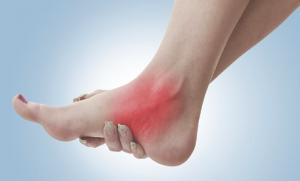 A tarsal coalition describes an abnormal connection or fusion between two or more tarsal bones of the foot. The connection between the two tarsal bones can be bony, cartilaginous or through fibrous tissue. There are seven tarsal bones located at the rear of the foot which include:
A tarsal coalition describes an abnormal connection or fusion between two or more tarsal bones of the foot. The connection between the two tarsal bones can be bony, cartilaginous or through fibrous tissue. There are seven tarsal bones located at the rear of the foot which include:
- Calcaneus (heel bone)
- Talus
- Navicular
- Cuboid
- Cuneiforms (medial, intermediate and lateral cuneiforms)
The bones and joints most often affected are the calcaneus and the navicular (calcaneonavicular joint) and the talus and the calcaneus (talocalcaneal joint). One or both feet can be affected.
What causes tarsal coalition?
Tarsal coalition commonly occurs in the womb during development and results in improper bone formation. It is thought to be linked to a gene mutation that affects the cells that produce the tarsal bones. Other causes of tarsal coalition include:
What are the symptoms?
For the majority who are born with tarsal coalition, the symptoms often don’t begin until the ages of around 8 to 16 years. This is when the bones tend to mature and ossify (harden). Not all tarsal coalitions are symptomatic, but symptoms can include:
- Pain
- Discomfort with physical activity
- Restricted movement of the foot at the affected joints
- Flatter foot appearance
- Tired, achy legs
- Muscle spasms
- Altered gait patterns (such as limping)
- Multiple sprains
You can learn more about children’s foot problems
here.
How is it treated?
Before treatment begins, the presence of a tarsal coalition is confirmed radiographically. Because the coalition of the bones cannot be reversed, treatment looks to manage the symptoms and control pain. The initial focus is on limiting the movement still available at the affected joints in order to relieve painful symptoms. This may include:
- Orthotics to control the motion of the foot and ankle, and relieve pressure away from the painful joints
- Footwear assessment to ensure that the shoes are helping and not hindering recovery by allowing excess movement
- Stretching and strengthening exercises to address muscular imbalances that may be resulting in greater strain or pressure around the affected area
- Boots or casts to immobilise the foot and alleviate any pressure from the area
In more severe cases where conservative therapies do not alleviate the painful symptoms, surgery may be indicated.
 A tarsal coalition describes an abnormal connection or fusion between two or more tarsal bones of the foot. The connection between the two tarsal bones can be bony, cartilaginous or through fibrous tissue. There are seven tarsal bones located at the rear of the foot which include:
A tarsal coalition describes an abnormal connection or fusion between two or more tarsal bones of the foot. The connection between the two tarsal bones can be bony, cartilaginous or through fibrous tissue. There are seven tarsal bones located at the rear of the foot which include:








